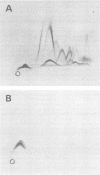Abstract
Antibodies against Clostridium difficile toxin A were purified by affinity chromatography from antiserum prepared against crude C. difficile toxin preparations. The affinity-purified antibody preparation was free of detectable amounts of antibodies to other C. difficile antigens, as demonstrated by crossed immunoelectrophoresis, and specifically neutralized the cytotoxicity of toxin A. An indirect enzyme-linked immunosorbent assay (ELISA) was subsequently developed using the antibody preparation for the specific detection of toxin A. The ELISA, which could detect 1 ng (5 ng/ml) of toxin A, was used to quantitate the toxin in the culture supernatant fluids of strains of C. difficile. The ELISA values for toxin A closely correlated with the toxin A and B cytotoxic titers of the supernatant fluids. In addition, toxin A was detected by ELISA in human fecal specimens from persons with antibiotic-associated colitis, demonstrating that this toxin is produced during C. difficile colitis.
Full text
PDF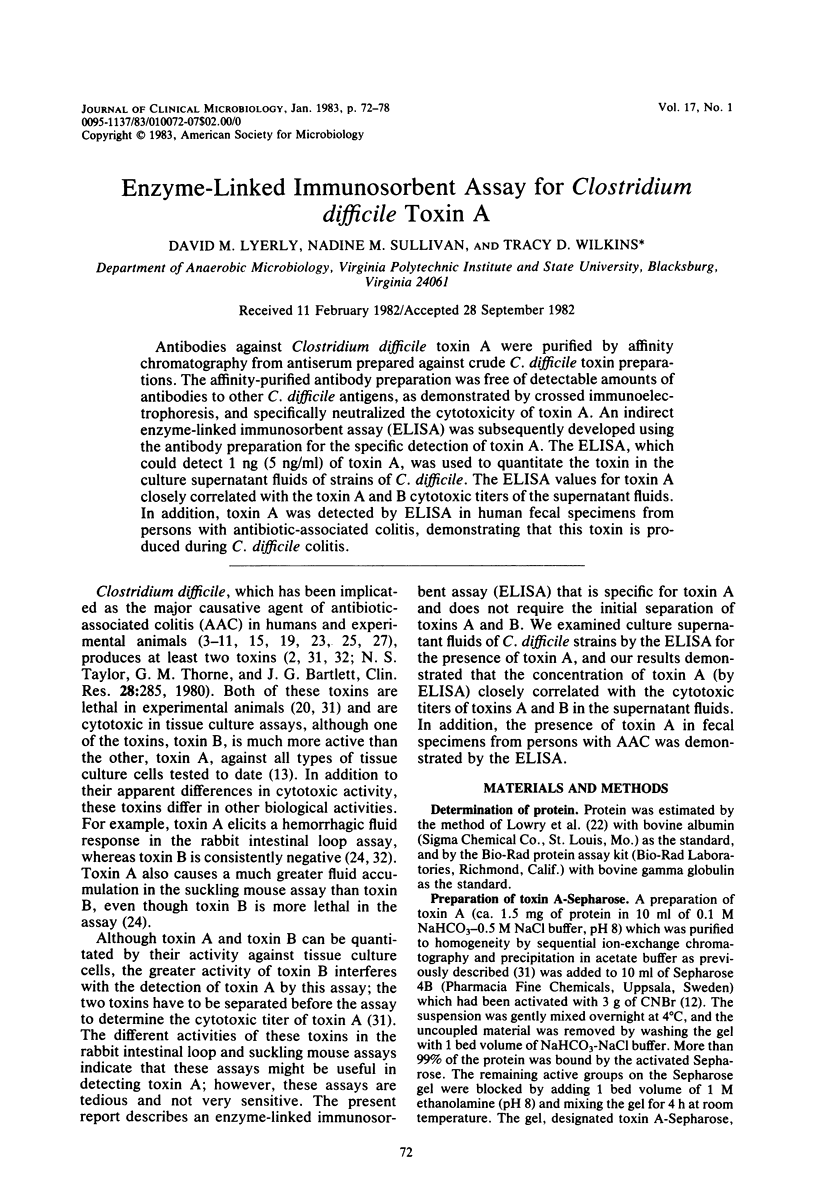
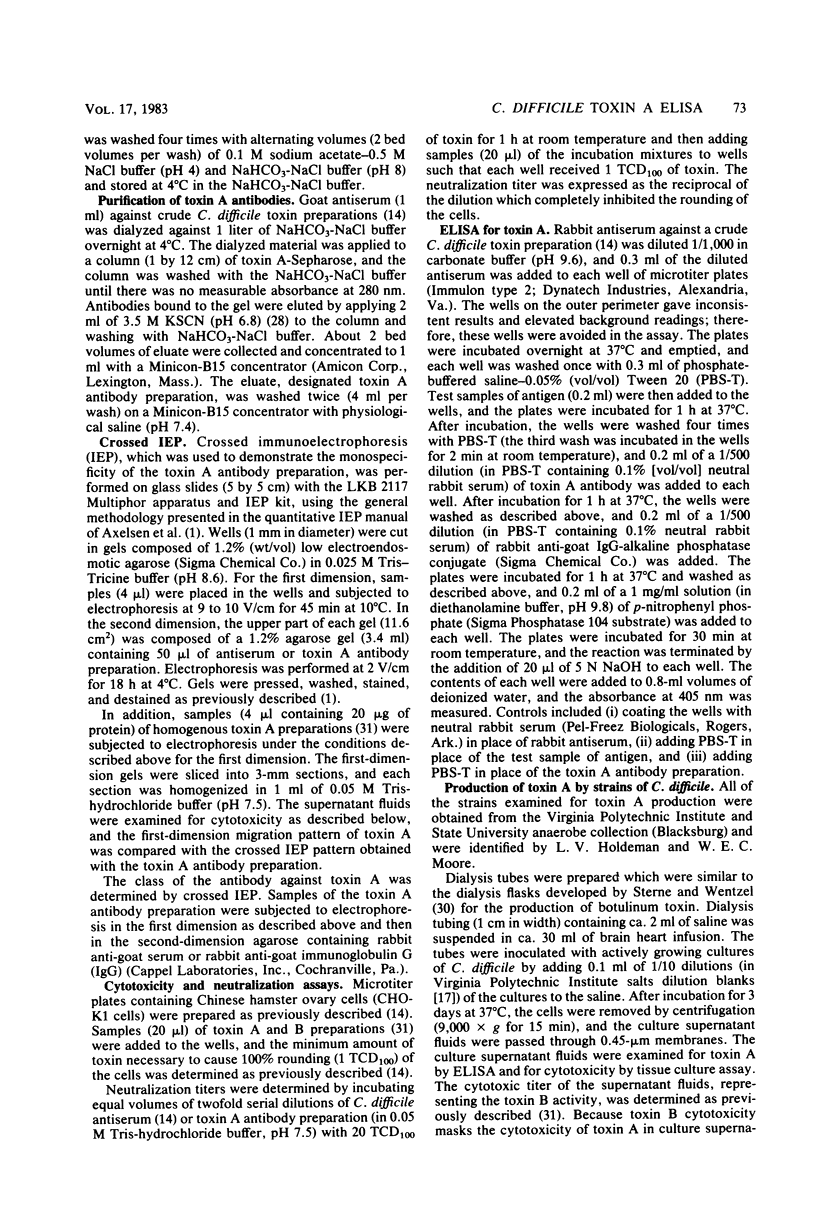
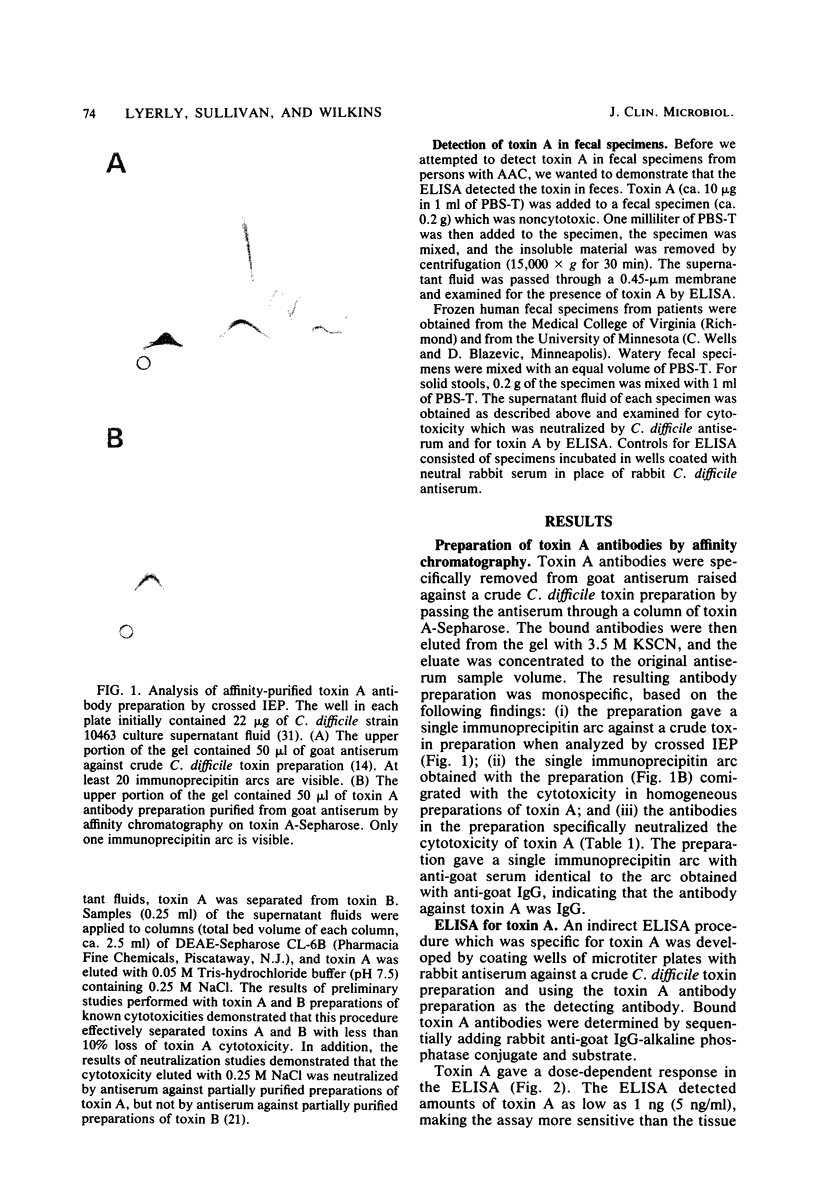
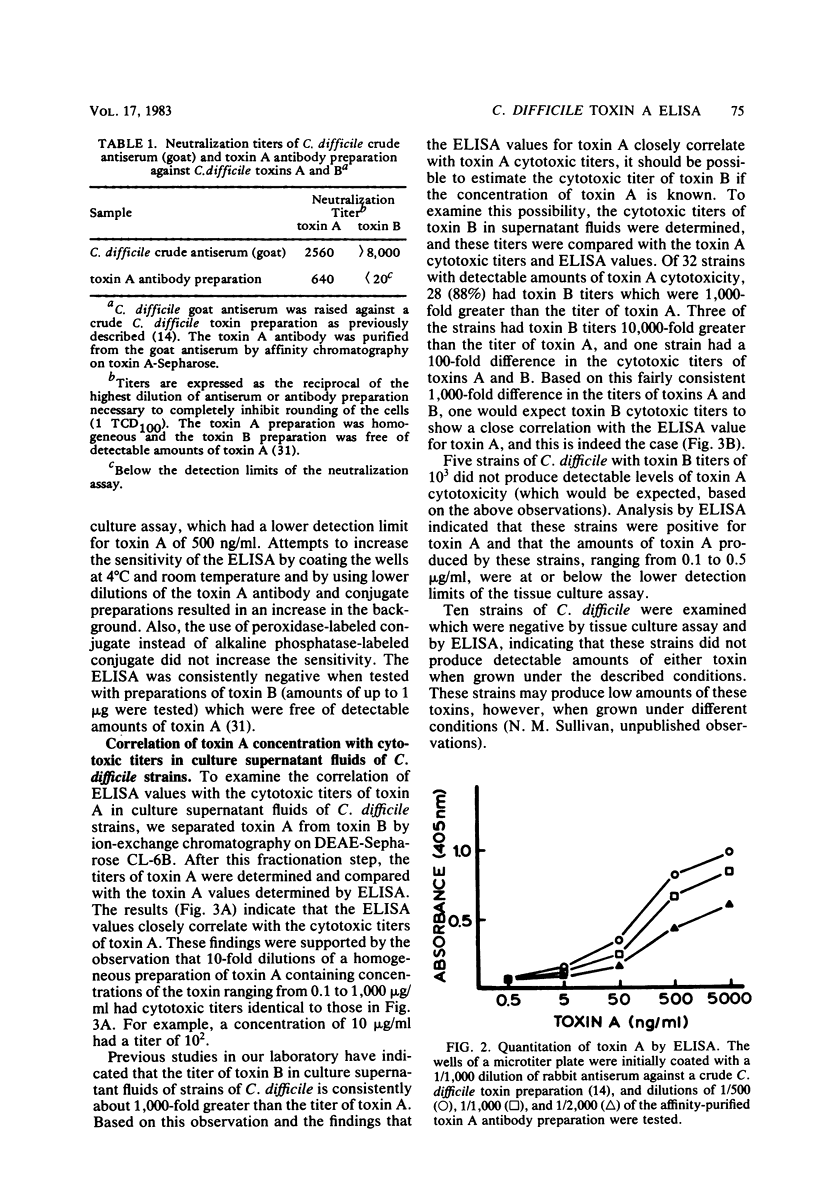
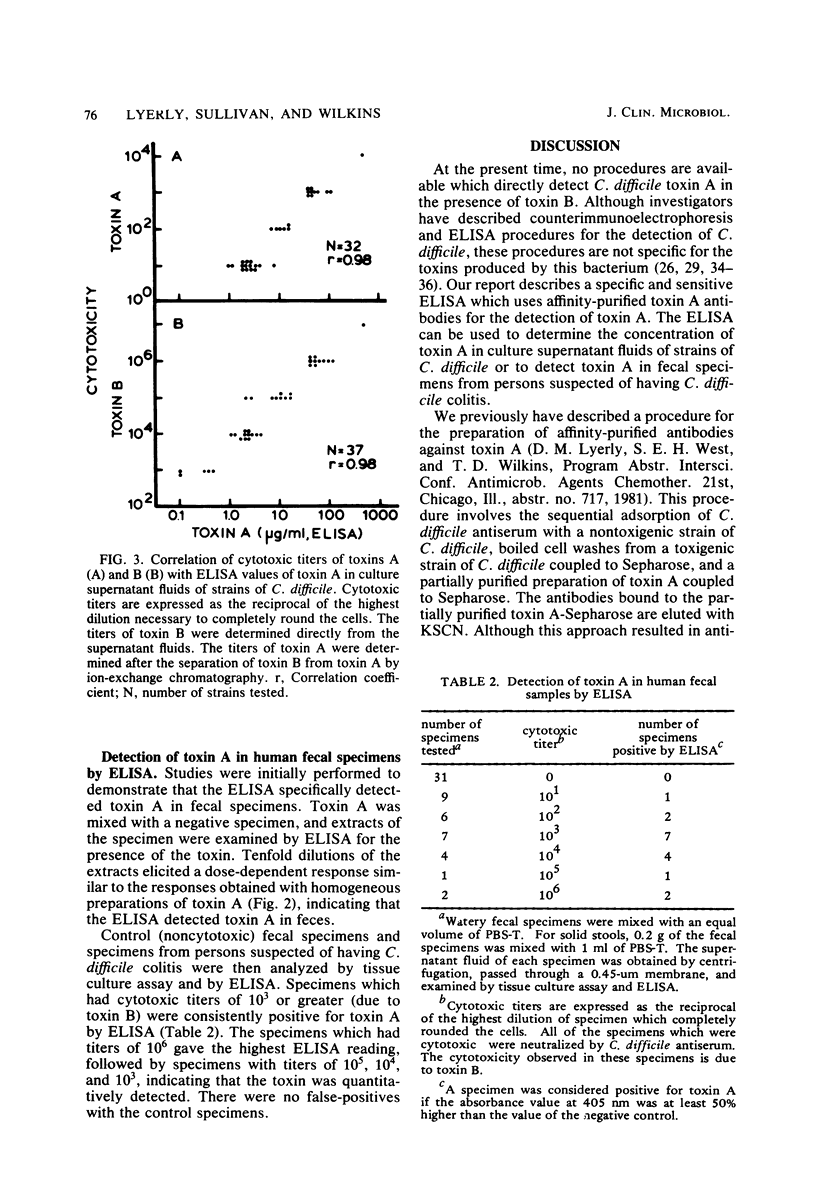
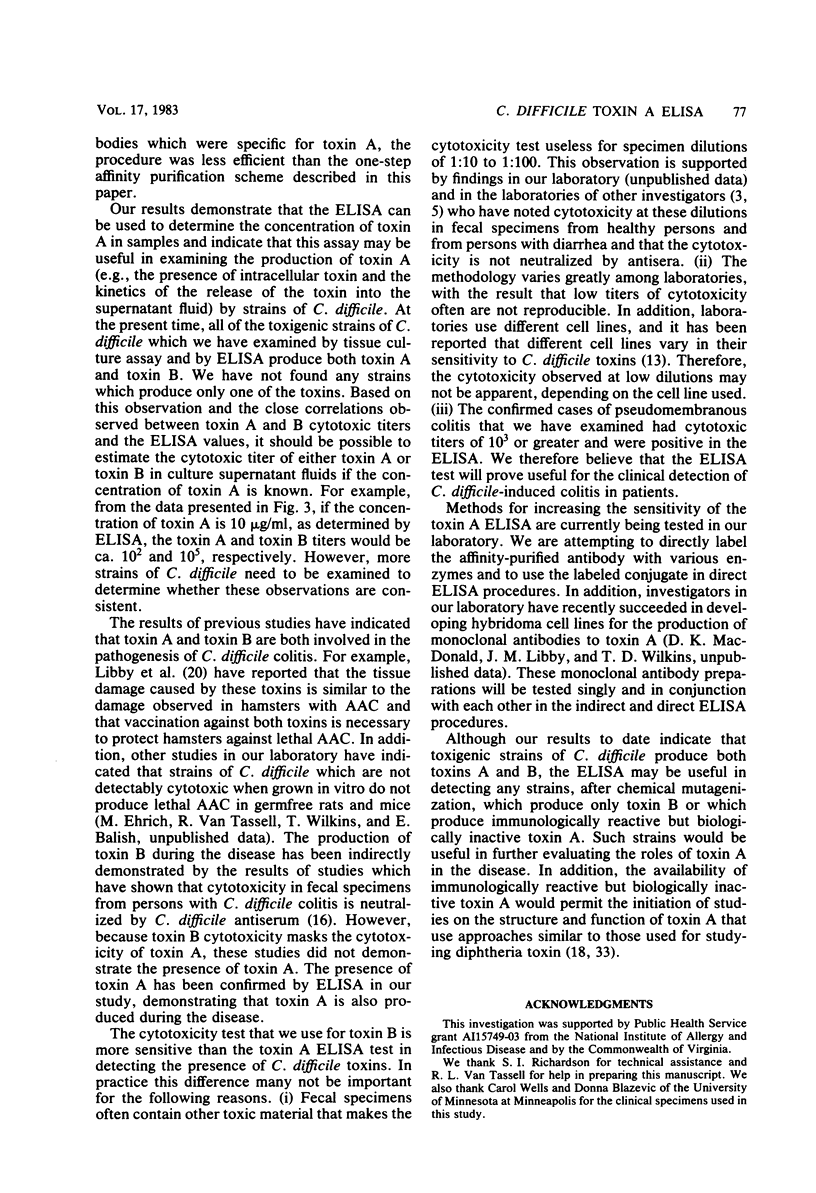
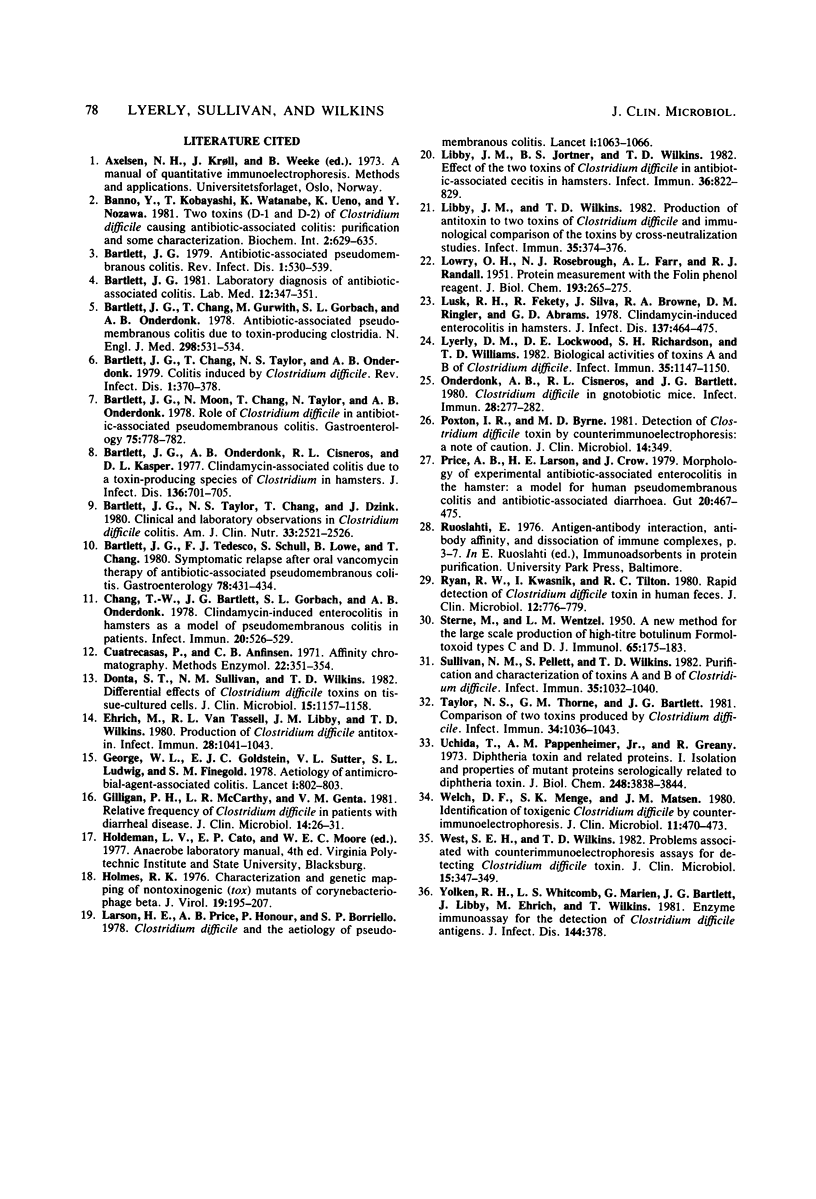
Images in this article
Selected References
These references are in PubMed. This may not be the complete list of references from this article.
- Bartlett J. G. Antibiotic-associated pseudomembranous colitis. Rev Infect Dis. 1979 May-Jun;1(3):530–539. doi: 10.1093/clinids/1.3.530. [DOI] [PubMed] [Google Scholar]
- Bartlett J. G., Chang T. W., Gurwith M., Gorbach S. L., Onderdonk A. B. Antibiotic-associated pseudomembranous colitis due to toxin-producing clostridia. N Engl J Med. 1978 Mar 9;298(10):531–534. doi: 10.1056/NEJM197803092981003. [DOI] [PubMed] [Google Scholar]
- Bartlett J. G., Chang T., Taylor N. S., Onderdonk A. B. Colitis induced by Clostridium difficile. Rev Infect Dis. 1979 Mar-Apr;1(2):370–378. doi: 10.1093/clinids/1.2.370. [DOI] [PubMed] [Google Scholar]
- Bartlett J. G., Moon N., Chang T. W., Taylor N., Onderdonk A. B. Role of Clostridium difficile in antibiotic-associated pseudomembranous colitis. Gastroenterology. 1978 Nov;75(5):778–782. [PubMed] [Google Scholar]
- Bartlett J. G., Onderdonk A. B., Cisneros R. L., Kasper D. L. Clindamycin-associated colitis due to a toxin-producing species of Clostridium in hamsters. J Infect Dis. 1977 Nov;136(5):701–705. doi: 10.1093/infdis/136.5.701. [DOI] [PubMed] [Google Scholar]
- Bartlett J. G., Taylor N. S., Chang T., Dzink J. Clinical and laboratory observations in Clostridium difficile colitis. Am J Clin Nutr. 1980 Nov;33(11 Suppl):2521–2526. doi: 10.1093/ajcn/33.11.2521. [DOI] [PubMed] [Google Scholar]
- Bartlett J. G., Tedesco F. J., Shull S., Lowe B., Chang T. Symptomatic relapse after oral vancomycin therapy of antibiotic-associated pseudomembranous colitis. Gastroenterology. 1980 Mar;78(3):431–434. [PubMed] [Google Scholar]
- Chang T. W., Bartlett J. G., Gorbach S. L., Onderdonk A. B. Clindamycin-induced enterocolitis in hamsters as a model of pseudomembranous colitis in patients. Infect Immun. 1978 May;20(2):526–529. doi: 10.1128/iai.20.2.526-529.1978. [DOI] [PMC free article] [PubMed] [Google Scholar]
- Donta S. T., Sullivan N., Wilkins T. D. Differential effects of Clostridium difficile toxins on tissue-cultured cells. J Clin Microbiol. 1982 Jun;15(6):1157–1158. doi: 10.1128/jcm.15.6.1157-1158.1982. [DOI] [PMC free article] [PubMed] [Google Scholar]
- Ehrich M., Van Tassell R. L., Libby J. M., Wilkins T. D. Production of Clostridium difficile antitoxin. Infect Immun. 1980 Jun;28(3):1041–1043. doi: 10.1128/iai.28.3.1041-1043.1980. [DOI] [PMC free article] [PubMed] [Google Scholar]
- George W. L., Sutter V. L., Goldstein E. J., Ludwig S. L., Finegold S. M. Aetiology of antimicrobial-agent-associated colitis. Lancet. 1978 Apr 15;1(8068):802–803. doi: 10.1016/s0140-6736(78)93001-5. [DOI] [PubMed] [Google Scholar]
- Gilligan P. H., McCarthy L. R., Genta V. M. Relative frequency of Clostridium difficile in patients with diarrheal disease. J Clin Microbiol. 1981 Jul;14(1):26–31. doi: 10.1128/jcm.14.1.26-31.1981. [DOI] [PMC free article] [PubMed] [Google Scholar]
- Holmes R. K. Characterization and genetic mapping of nontoxinogenic (tox) mutants of corynebacteriophage beta. J Virol. 1976 Jul;19(1):195–207. doi: 10.1128/jvi.19.1.195-207.1976. [DOI] [PMC free article] [PubMed] [Google Scholar]
- LOWRY O. H., ROSEBROUGH N. J., FARR A. L., RANDALL R. J. Protein measurement with the Folin phenol reagent. J Biol Chem. 1951 Nov;193(1):265–275. [PubMed] [Google Scholar]
- Larson H. E., Price A. B., Honour P., Borriello S. P. Clostridium difficile and the aetiology of pseudomembranous colitis. Lancet. 1978 May 20;1(8073):1063–1066. doi: 10.1016/s0140-6736(78)90912-1. [DOI] [PubMed] [Google Scholar]
- Libby J. M., Jortner B. S., Wilkins T. D. Effects of the two toxins of Clostridium difficile in antibiotic-associated cecitis in hamsters. Infect Immun. 1982 May;36(2):822–829. doi: 10.1128/iai.36.2.822-829.1982. [DOI] [PMC free article] [PubMed] [Google Scholar]
- Libby J. M., Wilkins T. D. Production of antitoxins to two toxins of Clostridium difficile and immunological comparison of the toxins by cross-neutralization studies. Infect Immun. 1982 Jan;35(1):374–376. doi: 10.1128/iai.35.1.374-376.1982. [DOI] [PMC free article] [PubMed] [Google Scholar]
- Lusk R. H., Fekety R., Silva J., Browne R. A., Ringler D. H., Abrams G. D. Clindamycin-induced enterocolitis in hamsters. J Infect Dis. 1978 Apr;137(4):464–475. doi: 10.1093/infdis/137.4.464. [DOI] [PubMed] [Google Scholar]
- Lyerly D. M., Lockwood D. E., Richardson S. H., Wilkins T. D. Biological activities of toxins A and B of Clostridium difficile. Infect Immun. 1982 Mar;35(3):1147–1150. doi: 10.1128/iai.35.3.1147-1150.1982. [DOI] [PMC free article] [PubMed] [Google Scholar]
- Onderdonk A. B., Cisneros R. L., Bartlett J. G. Clostridium difficile in gnotobiotic mice. Infect Immun. 1980 Apr;28(1):277–282. doi: 10.1128/iai.28.1.277-282.1980. [DOI] [PMC free article] [PubMed] [Google Scholar]
- Poxton I. R., Byrne M. D. Detection of Clostridium difficile toxin by counterimmunoelectrophoresis: a note of caution. J Clin Microbiol. 1981 Sep;14(3):349–349. doi: 10.1128/jcm.14.3.349-349.1981. [DOI] [PMC free article] [PubMed] [Google Scholar]
- Price A. B., Larson H. E., Crow J. Morphology of experimental antibiotic-associated enterocolitis in the hamster: a model for human pseudomembranous colitis and antibiotic-associated diarrhoea. Gut. 1979 Jun;20(6):467–475. doi: 10.1136/gut.20.6.467. [DOI] [PMC free article] [PubMed] [Google Scholar]
- Ryan R. W., Kwasnik I., Tilton R. C. Rapid detection of Clostridium difficile toxin in human feces. J Clin Microbiol. 1980 Dec;12(6):776–779. doi: 10.1128/jcm.12.6.776-779.1980. [DOI] [PMC free article] [PubMed] [Google Scholar]
- STERNE M., WENTZEL L. M. A new method for the large-scale production of high-titre botulinum formol-toxoid types C and D. J Immunol. 1950 Aug;65(2):175–183. [PubMed] [Google Scholar]
- Sullivan N. M., Pellett S., Wilkins T. D. Purification and characterization of toxins A and B of Clostridium difficile. Infect Immun. 1982 Mar;35(3):1032–1040. doi: 10.1128/iai.35.3.1032-1040.1982. [DOI] [PMC free article] [PubMed] [Google Scholar]
- Taylor N. S., Thorne G. M., Bartlett J. G. Comparison of two toxins produced by Clostridium difficile. Infect Immun. 1981 Dec;34(3):1036–1043. doi: 10.1128/iai.34.3.1036-1043.1981. [DOI] [PMC free article] [PubMed] [Google Scholar]
- Uchida T., Pappenheimer A. M., Jr, Greany R. Diphtheria toxin and related proteins. I. Isolation and properties of mutant proteins serologically related to diphtheria toxin. J Biol Chem. 1973 Jun 10;248(11):3838–3844. [PubMed] [Google Scholar]
- Welch D. F., Menge S. K., Matsen J. M. Identification of toxigenic Clostridium difficile by counterimmunoelectrophoresis. J Clin Microbiol. 1980 May;11(5):470–473. doi: 10.1128/jcm.11.5.470-473.1980. [DOI] [PMC free article] [PubMed] [Google Scholar]
- West S. E., Wilkins T. D. Problems associated with counterimmunoelectrophoresis assays for detecting Clostridium difficile toxin. J Clin Microbiol. 1982 Feb;15(2):347–349. doi: 10.1128/jcm.15.2.347-349.1982. [DOI] [PMC free article] [PubMed] [Google Scholar]
- Yolken R. H., Whitcomb L. S., Marien G., Bartlett J. D., Libby J., Ehrich M., Wilkins T. Enzyme immunoassay for the detection of Clostridium difficile antigen. J Infect Dis. 1981 Oct;144(4):378–378. doi: 10.1093/infdis/144.4.378. [DOI] [PubMed] [Google Scholar]



